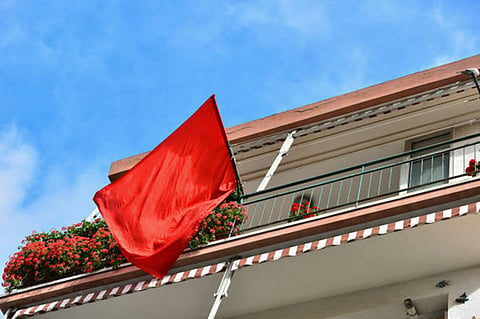Where Property Managers Miss Annual Maintenance Red Flags
Property managers keep residential and commercial spaces running, especially in fast-moving cities like Las Vegas. Rapid turnover and constant tenant changes create pressure to stay on schedule, often at the cost of proactive maintenance. Annual checklists become routine, and subtle warning signs slip by unnoticed. In a city where extreme heat and dry conditions wear down buildings quickly, these missed signals can lead to major repairs and tenant dissatisfaction.
Minor issues—like aging plumbing, worn HVAC components, outdated fire safety gear, or damaged seals—often get pushed aside until something breaks. Overlooking common problems doesn’t just raise repair costs. It creates avoidable disruptions that damage property value and tenant trust. Sharpening focus on the quiet failures hiding behind routine inspections can make the difference between stability and expensive surprises.
Missed Plumbing Inspections That Lead to Costly Repairs
Plumbing problems often go unnoticed during routine checks. Nevada’s dry climate makes water issues worse without obvious signs. Pressure test failures get overlooked, especially in older buildings. Professionals who know about complex plumbing issues like an experienced plumber in Las Vegas can be a helpful step in finding solutions, especially when it comes to spotting subtle signs of hard water buildup and aging systems that can slow water flow. Left unchecked, such issues can lead to slab leaks that weaken the foundation and cause major structural damage.
Understanding potential risks supports a smarter approach. Regular plumbing inspections that focus on pressure testing and preventing scaling can catch small problems before they turn into big ones. Addressing the specific plumbing challenges tied to Nevada’s climate helps keep properties in better shape and people living in them safer.
Overlooked HVAC System Degradation in the Desert Heat
Relentless Las Vegas heat quietly wears down HVAC systems, especially rooftop units left baking in the sun. Even when they seem to be working, hidden wear can build up and lead to failure right when demand peaks—usually in the hottest months.
A common culprit is dust buildup from nearby construction sites. When coils stay dirty, airflow drops and systems strain to keep up, driving up energy use and shortening equipment lifespan. Regular maintenance that includes coil cleaning and load performance testing can keep systems steady, cut costs, and reduce the risk of midsummer breakdowns.
Fire Safety Compliance Lapses in Commercial Buildings
Assuming everything is fine after a fire safety inspection can lead to risky gaps. Some property managers rely too much on third-party checks without realizing some problems might still be there. Fire extinguishers might have expired tags, making them useless during emergencies. New construction work might block sprinkler heads, reducing their effectiveness in a fire.
Emergency lighting is often untested, which could leave people in the dark when panic strikes.
Knowing about common issues helps property managers stay better prepared. Regular fire safety checks, even after inspections, help catch problems early. Ongoing attention like that protects people and property while staying within safety guidelines.
Roof and Gutter Failures Hidden by Dry Climate Assumptions
Roofs and gutters demand regular attention—even in dry climates like Las Vegas. Intense sunlight cracks shingles, weakens sealants, and accelerates material breakdown. What looks intact from the ground may be hiding vulnerabilities that show up only when the first storm hits, leading to sudden leaks and interior damage.
Birds frequently build nests in neglected gutters, blocking drainage and adding weight that strains roof structures. Poor flashing installation or loosened seals around joints allow water to creep in slowly, creating costly repair issues over time. Inspections before rainy periods help spot hidden threats early and extend the life of the roofing system.
Window and Door Seal Failures That Drain Energy Budgets
A building’s outer shell quietly loses efficiency over time. Warped weatherstripping, loose frames, and shifting sashes create small openings that drive up heating and cooling costs. In older properties, uncoated windows absorb desert heat, making indoor temperatures harder to manage. Issues like that often go unnoticed during standard inspections but steadily drain energy budgets.
Replacing worn seals, realigning frames, and upgrading to coated glass closes the gaps—literally and financially. In a climate like Las Vegas, tightening a building’s envelope does more than cut utility bills; it improves comfort and reduces stress on overworked HVAC systems.
Managing properties in Las Vegas means dealing with heat, rapid turnover, and wear that creeps in quietly. Overlooking plumbing tests, HVAC cleaning, fire equipment checks, roof inspections, or worn seals often leads to emergencies that cost more and upset tenants. Small problems, when ignored, become large liabilities. Consistent, thorough maintenance—like pressure testing, coil cleanings, fire code follow-ups, and weatherproofing—helps prevent breakdowns before they start. Property managers who stay alert to these often-missed details avoid costly surprises, protect long-term value, and offer a better experience for tenants. A focused maintenance plan turns routine tasks into real risk reduction and savings.
Inspired by what you read?
Get more stories like this—plus exclusive guides and resident recommendations—delivered to your inbox. Subscribe to our exclusive newsletter
Resident may include affiliate links or sponsored content in our features. These partnerships support our publication and allow us to continue sharing stories and recommendations with our readers.

